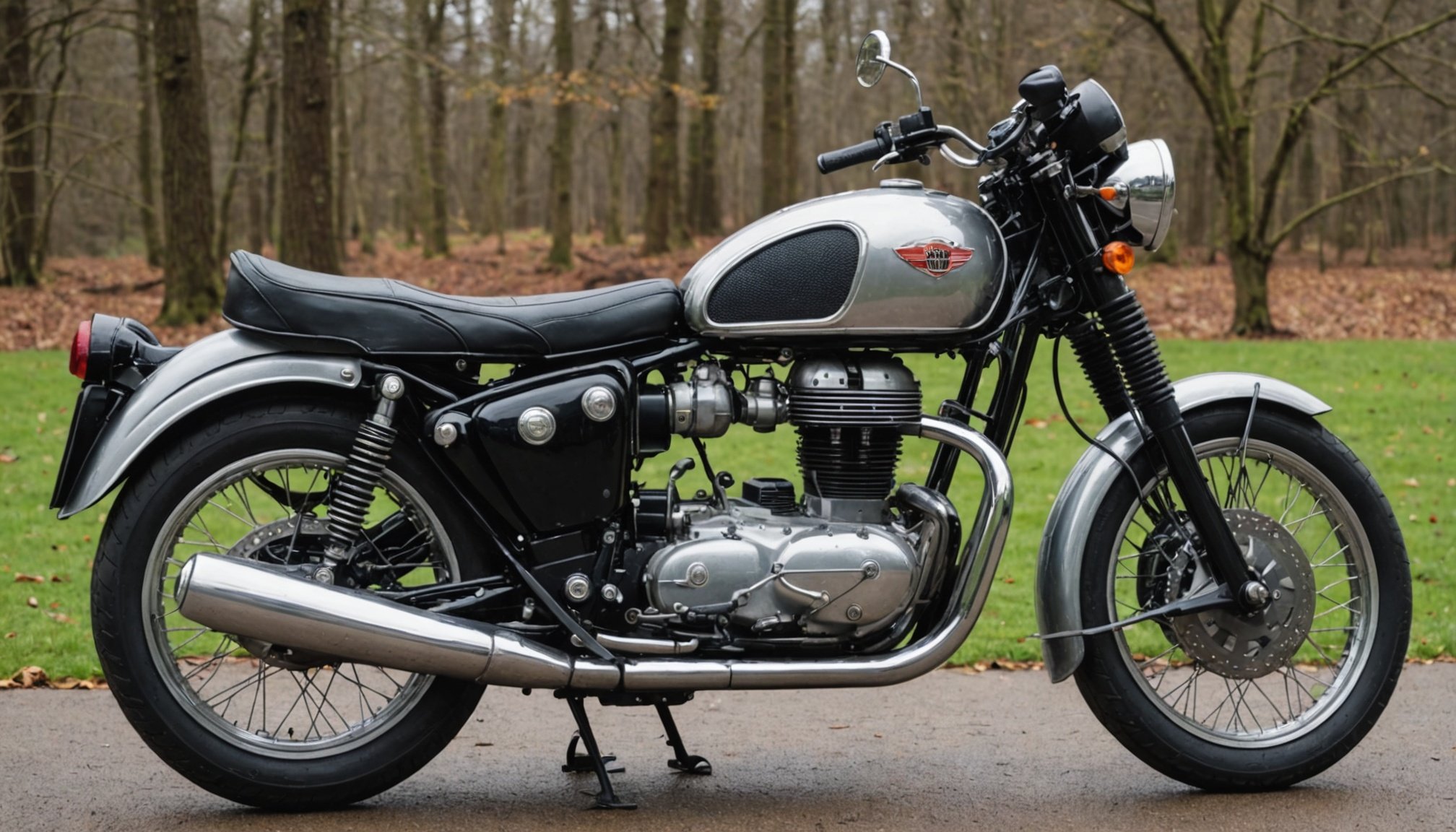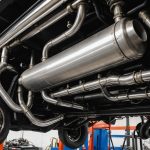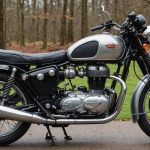Understanding the Importance of Winterizing Your Motorcycle
Winterizing a motorcycle is a crucial task for enthusiasts, ensuring motorcycle care year-round. Cold weather can significantly affect a motorcycle’s performance. Freezing temperatures may cause the engine oil to thicken, which can lead to difficulty starting your bike. Tires can also deflate as the temperature drops, affecting traction and handling.
Taking the time to prepare your bike for winter storage can save you from costly repairs and extend the lifespan of classic motorcycles. Proper winterization helps in preventing issues such as corrosion and fuel system blockages. Investing in this care can safeguard both classic and modern bikes, ensuring they remain in top condition for riding seasons to come.
Also read : Top Tips for Caring for Leather Upholstery in Your British Convertible: Essential Best Practices
Unprepared motorcycles often face numerous problems in winter. Fuel systems can become clogged due to condensation, and batteries may discharge faster, leaving the bike unable to start. Additionally, neglecting winterization may cause internal components to rust, leading to potential engine damage.
To avoid these pitfalls, ensure correct motorcycle care by cleaning and lubricating moving parts, stabilizing the fuel, and checking battery health. Protecting your bike from the harsh winter elements will promote smoother rides once warmer weather returns.
In parallel : Top Strategies to Shield Your British Car”s Paint from Harmful UV Rays
Engine Care and Maintenance
Proper engine maintenance is crucial for the longevity and performance of your classic motorcycle engine. A well-maintained engine not only ensures a smooth ride but also protects against costly repairs. Let’s delve into some essential steps for keeping your engine in tip-top shape.
Firstly, the oil in your engine acts as its lifeblood, so regular checking and changing are indispensable. To ensure optimal performance, check the oil level using the dipstick, especially before long rides. If the oil appears dark or dirty, it’s time for a change. Use high-quality oil specified by the manufacturer for best results.
In addition to oil maintenance, inspecting and replacing filters must become part of your routine. Oil and air filters play a crucial role in trapping harmful particles that could damage the engine. Replace these filters as per your classic motorcycle engine’s maintenance schedule, or when they appear clogged.
During winter, engine care requires extra attention. Ensure coolant levels are adequate to prevent the engine from freezing. Use a coolant that withstands low temperatures, and regularly check for any leaks in the cooling system. Keeping your engine warm and covered when not in use also helps prevent cold-start problems.
Taking these proactive steps secures your classic motorcycle engine’s performance throughout the year.
Fuel Stabilization Techniques
Fuel stabilization is essential for motorcycle fuel care, especially during long periods of inactivity, such as winter months. Neglecting this can lead to a myriad of issues, including fuel degradation and engine starting problems.
Overview of Fuel Additives and Their Benefits
Fuel additives play a critical role. These additives prevent fuel from going stale by curbing oxidation and moisture accumulation. They often come equipped with ingredients that help clean and protect the engine, extending the life of your motorcycle. Many riders find these additives invaluable for winter storage.
Properly Flushing Existing Fuel
Before filling with stabilized fuel, it’s advisable to flush the existing fuel from your motorcycle’s system. This ensures that only treated fuel circulates through the engine, minimizing risks of fuel-related issues. To flush, drain the fuel tank completely and run the engine until it sputters and stops. This reduces contaminant build-up and keeps the system clear.
Best Practices for Storing Fuel During Winter
Once the tank is clean and filled with stabilizer-infused fuel, you should store your motorcycle in a dry, temperature-controlled environment. Seal the fuel tank to prevent moisture ingress and periodic rotations may help maintain even distribution of the fuel stabilizer. Such winter fuel tips ensure a smooth start when riding season arrives again, protecting your bike from needless wear.
Battery Maintenance
Maintaining a motorcycle battery’s charge is crucial for its longevity and performance. Without proper battery care, a motorcycle’s electrical system may suffer, leading to unexpected breakdowns. One frequent issue is battery discharge over time, which can be avoided by regular battery charging. It’s recommended to use a smart charger that prevents overcharging, maintaining the battery in an ideal state.
In the cold months, winter battery maintenance is especially important. It includes storing the battery in a cool, dry place away from extreme temperatures. Avoid concrete floors, as they can lead to rapid discharge. To further ensure longevity, inspect terminals for corrosion. Clean them using a mixture of water and baking soda and a terminal brush to enhance charging efficiency.
Furthermore, optimal storage conditions are vital. Keep the battery at an even temperature, ideally between 5 to 25 degrees Celsius. Protect it from moisture and dust to avoid deterioration. You might also consider a battery tender to keep it fully charged when not in use for long periods.
By embracing these practices, enhancing the efficiency and lifespan of your motorcycle’s battery becomes achievable, ensuring reliability regardless of the season.
Tire Storage and Condition
Proper tire maintenance is crucial for extending the life of your motorcycle tires, particularly during the winter months when they may be in storage. Before you store your tires, it is essential to assess their pressure and tread. Ensuring the correct tire pressure is pivotal as underinflated or overinflated tires can lead to uneven wear and potential blowouts. Checking the tread depth is equally significant to confirm optimal grip and performance.
For effective winter tire storage, choose a cool, dark, and dry location. It plays a vital role in preserving the rubber compound of the tires. Lay the tires flat on a clean surface if they are off the motorcycle, and avoid areas with fluctuating temperatures or direct sunlight. Consider using tire bags or covers to protect them from dust and moisture.
Regular inspections are necessary to maintain tire condition. Even when not in use, tires can develop flat spots or cracks over time. Darrier devoting time for periodic checks to catch such issues early on. By understanding and applying these practices, you will ensure the longevity and reliability of your motorcycle tires throughout the season and beyond. This approach fosters a proactive mindset regarding tire health, ensuring safety and enjoyment during rides.
Cleaning Your Motorcycle Thoroughly
Taking the time for motorcycle cleaning is crucial, especially when preparing your ride for winter. A clean motorcycle not only seems visually appealing but also protects and extends its life. Using the right cleaning products and techniques can make all the difference.
When dealing with a classic motorcycle, even more care is required to preserve its aesthetic and functional integrity. Start with gentle, non-corrosive cleaners to ensure that delicate parts remain unharmed. Focus on areas prone to dirt accumulation, such as the chain and tires, which are often overlooked in regular cleans.
An often-cited tip for winter cleaning is waxing. This creates a protective layer against moisture, which is vital in the cold months. Applying a specialty motorcycle or carnauba wax can preserve your motorcycle’s shine and prevent rust. Also, pay attention to the battery and electrical compartments, keeping them free of moisture.
Regular winter cleaning contributes significantly to motorcycle care. It mitigates potential damage caused by road salt and grime. Keeping your motorcycle immaculate aids its performance and can even enhance resale value. Regular maintenance is the key to enjoying your classic motorcycle for many seasons to come.
Checklist for Winterization
Preparing for winter is crucial for every motorcycle enthusiast. A winterization checklist serves as a comprehensive guide, ensuring no detail is overlooked. While it might feel daunting, especially for those with classic motorcycles, breaking tasks into manageable steps can make the process more enjoyable.
First, start by giving your motorcycle a thorough cleaning. Dirt or grime left on the surface can lead to corrosion, particularly in the harsh winter months. Once clean, perform a motorcycle maintenance checklist to inspect critical components. Check tire pressure, oil levels, and ensure the battery is charged and ready for storage.
For classic motorcycle preparation, special attention to detail is vital. Older models may require more frequent inspection. It’s advisable to consult a professional if you’re unsure about any components. Additionally, using visual aids, such as diagrams or video tutorials, can be incredibly helpful in understanding specific tasks.
Here’s a handy bullet point list of suggestions to cover:
- Clean your motorcycle thoroughly.
- Perform a detailed mechanical inspection using a checklist.
- Focus on classic motorcycle preparation for older models.
- Utilize visual aids for clarity and better execution.
Embrace these tasks confidently, knowing they ensure your beloved ride is well-maintained and ready to hit the road again once spring arrives.










